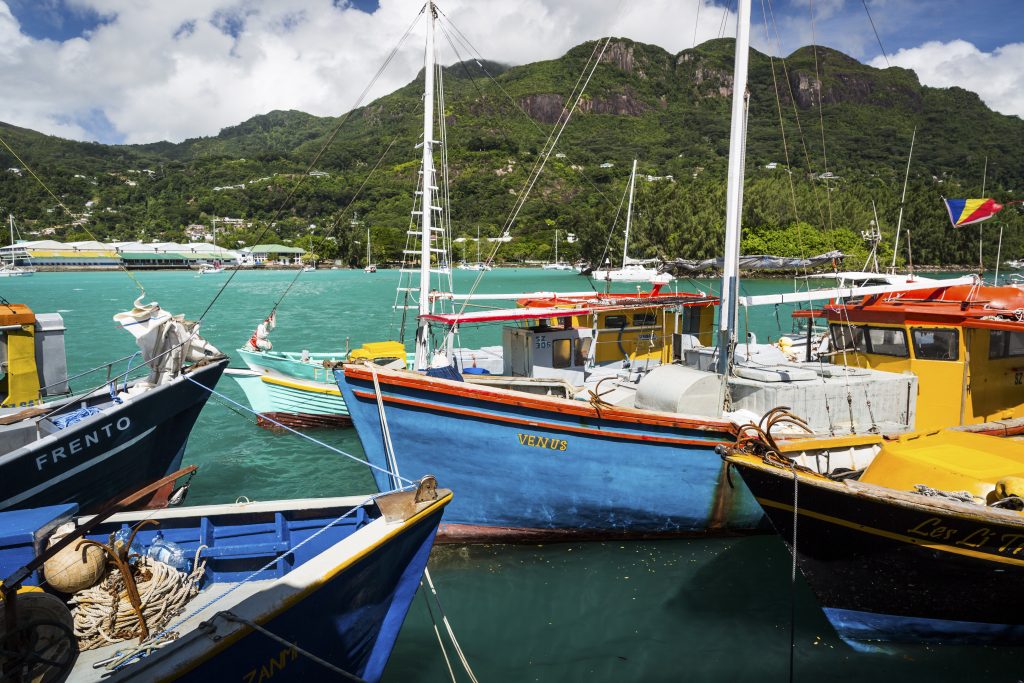Socioeconomic Criteria
Principle 5:
Identification and consideration of social, cultural, economic, and governance aspects of coastal communities in design and management.
Social and economic considerations should be considered when designing and managing a resilient MPA or MPA network. The creation of a MPA network with both socio-economic and biophysical objectives can help move from single sector management to a more holistic approach, including human and ecosystem interactions, and cumulative impacts. This multiple-objective approach can create a foundation that transforms the way people address conflicts between the environment and the economy.

Fleet of artisanal fishing boats in Cousin Island, Seychelles. Photo © Jason Houston
Social factors to consider in MPA design:
- Social acceptance (whether the local community supports the MPA)
- Recreation (degree to which an area could be used for recreation)
- Education and research opportunities
- Culture (religious, historical, cultural values of a site)
- Conflicts of interest (degree to which protection affects activities of local residents, etc.)
Economic factors to consider in MPA design:
- Economic benefits (how protection will affect the local economy)
- Importance to fisheries (number of dependent fishers and size of yield)
- Importance to species (degree to which certain commercially important species depend on the area)
Design Recommendations
- Ensure sharing of costs and benefits of MPA among communities. ref
- Design zones and rules to ensure that the community can continue to sustainably fish and receive food, income, and other benefits from the MPA.
- Involve the community in decision making and ensure that the MPA meets the needs of different community groups (fisherfolk organizations, women’s groups, etc.). Such efforts will increase compliance with regulations and community support for the MPA.
- When feasible, evaluate and measure the ecosystem services of the area.
- Ensure balance between extractive and conservation uses (e.g., between sustainable harvesting and healthy reefs for biodiversity and tourism goals).
